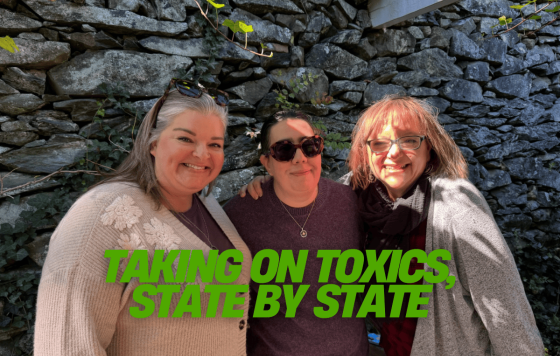
Connecticut became a national leader when we passed our priority PFAS (per and polyfluoroalkyl substances) bill this year. The bill restricts two major sources of contamination—1) firefighting foam and 2) food packaging. We’re proud to have led these efforts in collaboration with legislators and state agency officials. The Department of Energy and Environmental Protection is implementing a take back program of the toxic foam and replacing it with a fluorine free foam that is effective and safer for public health and the environment. This also helps so many of our local fire departments that don’t have the dollars or resources to do this safely. Food packaging containing PFAS will be banned as of 2023.
Despite this significant win, there is much more to do! The US Environmental Protection Agency (EPA) has identified more than 120,000 locations around the US where people may be exposed to a class of toxic “forever chemicals” associated with various cancers and other health problems that is a frightening tally four times larger than previously reported, according to data obtained by the Guardian.
On October 19th, the EPA announced the PFAS Roadmap which includes:
- Timelines to set enforceable drinking water limits under the Safe Drinking Water Act (SDWA) to ensure water is safe to drink in every community;
- A hazardous substance designation under the Comprehensive Environmental Response, Compensation, and Liability Act (CERCLA) to strengthen the ability to hold polluters financially accountable;
- Timelines for action -- whether it is data collection or rulemaking -- on Effluent Guideline Limitations under the Clean Water Act (CWA) for nine industrial categories;
- A review of past actions on PFAS taken under the Toxic Substances Control Act (TSCA) to address those that are insufficiently protective;
- Increased monitoring, data collection, and research so that EPA can identify what actions are needed and when to take them;
- A final toxicity assessment for GenX that can be used to develop health advisories that will help communities make informed decisions the better to protect human health and ecological wellness; and
- Continued efforts to build the technical foundation needed on PFAS air emissions to inform future actions under the Clean Air Act (CAA).
These are steps in the right direction but don’t go far enough, fast enough. States must continue to take the lead. We need to assure that states 1) turn off the tap by restricting the sale of all products that contain PFAS, 2) regulate the entire class of PFAS, 3) set a fully health protective drinking water standard, 4) hold manufacturers and polluters accountable, and 5) support wastewater treatment facilities with research and resources to assure PFAS are not entering the environment through treated wastewater.
Join our email list to stay on top of our work and get involved!
Related Posts
Stay Informed
Get the latest updates and actions:
Thanks for signing up!
There was a problem processing your signup. Please try again.


